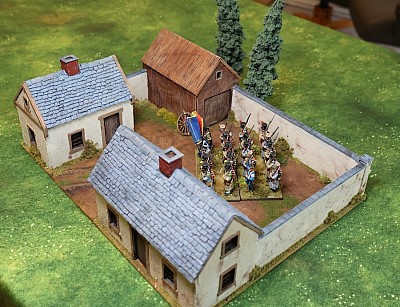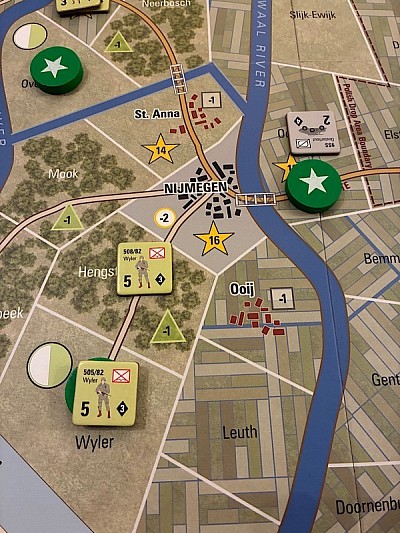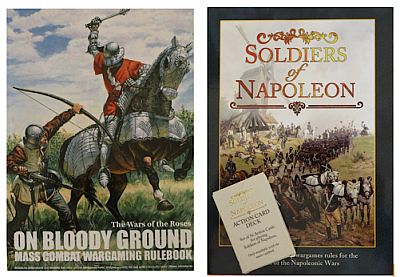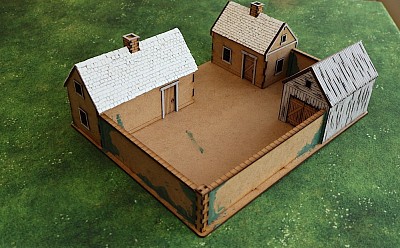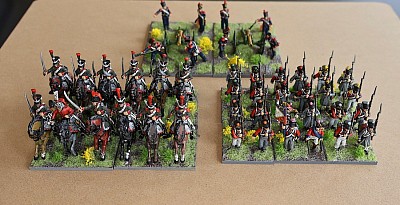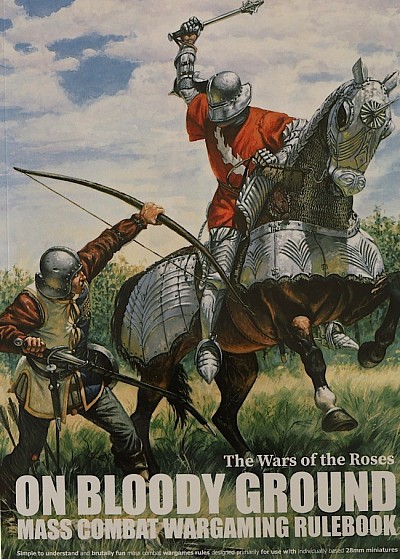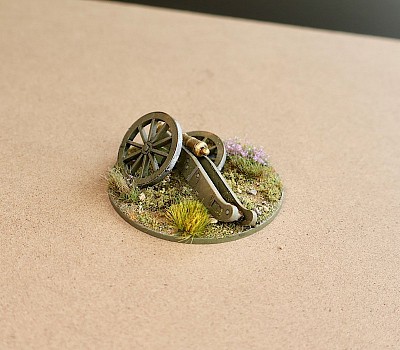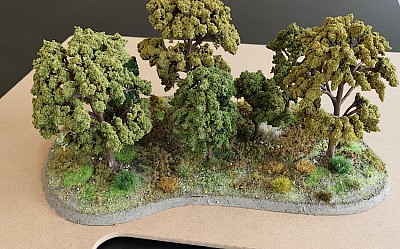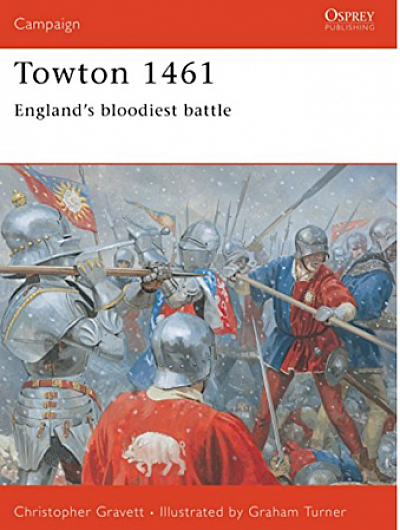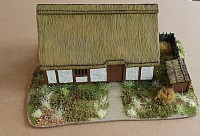Dear Diary - a rolling 4 months of comment
Above
A small slice of the First Day at Gettysburg map. Nice and clear graphics. I am just halfway through the series rulebook ....... but I have nodded off twice while reading - Oh Dear!
This opening to the battle is, for some reason, one of the most interesting parts of the campaign for me. At this tactical level, there are more cavalry counters than I have seen before when gaming the situation, so it will be interesting to see how they function in this system.
The cavalry seem to start much further back from Willoughby Run than I have them when playing with figures. The scenario starts at 9 AM and one of Archer's Brigades already has losses, so I suspect if I check my sources, the initial earlier attack has already happened and the cavalry have fallen back accordingly. Looking forward to this.
Prussian Farmyard
The starting point to this was that for some time, I had wanted a ‘farmyard’ type complex for my Napoleonic table - something that looked like a continental farmyard with a high wall.
There is a nostalgic aspect to this going back to my young teenage years. I had the Airfix Napoleonic farmyard, together with all the French and British Airfix soldiers that a boy could want ... and all painted - badly, but still painted.
My mother got talking to the next door neighbour. They had a nephew who did this strange wargame thing and they arranged for him to call around. I set up the farmhouse together with rank upon rank of soldiers …… he brought some metal figures, including a horse and limber.
I was mesmerised with the metals and a passion for properly painted ‘grown up’ figures was born that instant. I would have swapped everything I owned for those few metals! Anyway, that meeting, the game and the farmhouse at the centre of the action is one of those memorable hobby moments …. I am early mid teens, standing in our old front room, with the dining table set up in the middle and I am Wellington!
So of course, it is of no surprise that when browsing the Warbases webpage for Napoleonic ammunition carts, when I strayed to the buildings section and found their ‘Prussian Farmyard’ MDF kit for the princely sum of £27, it was an automatic purchase, a period walled farmhouse with a very helpful footprint of just 8½" x 11".
It is a relatively fast and easy build, thankfully as mine did not have instructions ….. and the reason why a capping stone from the wall has ended up in the base of a chimney!
One of the three buildings comes with card coverings to give the MDF barn a wooden structure look and that works very well, but the other two buildings and walls are plain MDF and need some help.
For these two buildings I made individual roof tiles from thin card, laborious, but worth it.
For the whole complex, I was quite happy with the whitewash look that seems common of the period, so I covered all of the walls with a mixture of white Gesso, modellers paste and a touch of Vallejo something or other that has a bit of fine sand in it. I used a ½" flat head brush to get the first coat on and then once dry applied an artist's acrylic linen colour with a very slight tint of raw sienna.
A very thin coating of the same went onto the courtyard ground for the sandy texture, with various browns then scrubbed in.
I had intended to do the roof in a red tile, just like the photograph that Airfix used on the front of their kit box, but after some internet checking, the further that we move towards Prussia / Austria, it seems that these buildings tended towards grey slate roofing, so I have gone with that.
Completed with some flocks and rattle can matt varnish, the final result is a terrain piece that will come out often, it will hold a battalion of infantry, scales well with the figures and has a compact base size.
A Bridge Too Far!
Last night our face-to-face game took the recent release 'Market-Garden' published by Compass Games for a spin. This is Volume II in their WWII Commander series.
This is an Area Movement game (rather than hexes). The map and playing pieces are nicely done and the system is very playable, so no need for the rulebook to get in the way of tactical plans and just playing the game.
Having said that, some mistakes crept in. We missed an important point on the Out of Supply rules, which mattered at Arnhem and we both had one incident of forgetting to bring on reinforcements, which delayed them a turn and again one of those incidents mattered for the Allies at Arnhem when the Polish Airborne and their supply were due to arrive to hopefully save the day.
I would have liked to have seen a timetable printed on the board to show how well the British 30th Corps advance was doing compared to the historical positions. The Allies were against the clock and a timetable would help to deliver that sense of pressure and would also help the German player measure how well they are doing.
Like Gettysburg and Waterloo etc, there have been plenty of Arnhem game designs, but overall, in terms of the type of game that I like, this is one is up there as a good game.
The downside for me was that despite moving the turns along at a good pace, the game still didn't fit into our typical 3 hour gaming session. By close of play, we were still a few turns away from when the game should end.
The Allies had reached Nijmegen and Arnhem was contested and so the disappointing conversation was had, trying to second guess what the completed game outcome would likely have been had we reached the end.
This evaluation was made all the harder by getting rules wrong that concerned Arnhem itself, so we could not be sure whether Arnhem would actually have still been Allied controlled at the point that we ended play, making the second guessing rather pointless.
A reorganizing of hobby emphasis (again)
Regular readers of this blog will be used to seeing ‘a final’ stream-lining and re-organisation of hobby post and yes, here we are again! The boardgames get a slight tweak and the figures get a wake up call!
First the easy one - board games. The principle of reducing the collection to being based on ‘series’ rules, covering ancients right through to WWII has been embedded for several years, but every now and then, one series will fall out of favour, replaced by another. The recent tweaks pertain to American War of Independence, American Civil War, with Napoleonics still under review.
My collection had an AWI gap and the problem here is that there are not many candidates to choose from, especially in the ‘series’ type of games. However, I have jumped (back in) to the Battles of the American Revolution (BoAR) games by GMT. I have been here before, but was not keen on the D10 Combat Table as D10 systems can tend to be a bit swingy - however, my view on this sort of thing has changed and I now see ‘swingy’ more as a mechanism to reduce the player having too much control of everything and instead leaving the local fight to the unseen colonels etc.
Anyway, I now have eight separate AWI battles on rather lovely maps - so I am looking forward to re-engaging with this.
For the American Civil War, I am returning to the Blind Swords series by Revolution games. Volume 12, First Day of Gettysburg, has just been released. The system does like its chaos and generally serves to reduce player control - something that I like. I did have the first four games in the series, but each had its own rulebook that was different in each set and that reduced my enjoyment, but now they have moved to a series based rule set for all of the games plus an exclusive rules book for each battle, which is much friendlier when playing across multiple titles.
I am starting with three new titles, The First Day at Gettysburg, Salem’s Church and 1st Bull Run. These games have replaced the ACW Battles series by Worthington Games, Rebel Fury by GMT and Great Battles of the American Civil War by GMT, which have all since been moved on.
Napoleonics have a slight log jam at the moment. I got rid of Hexasim’s Eagles of France series and dropped the Eylau series by Sound of Drums. I am left with two series, The Library of Napoleonic Battles by Operational Studies Group and Jours de Gloire by Vae Victis. I like both for different reasons, though both take longer to play than I really want, while the compact nature of JdG makes them easier to be left set up. The truth is, the Napoleonic series that I really want hasn’t been made yet. Regardless, to be true to having one series system per historical period, ideally one of these needs to go and one needs supporting, if for no other reason that then only one set of rules needs to remembered for good play.
I am still buying non-series games, but they need to work hard to justify the shelf space and wallet emptying.
Now the figures. Two factors recently gave me a ‘light on’ moment. Firstly, I have been collecting everything Epic (from Warlord Games) for a while. I had 7 of the large battle boxes covering 5 different periods, giving a total of 14,000 figures, with more Epic releases on the horizon and as a somewhat compulsive collector, they will be bought (the series mentality!)
I was painting these furiously and not particularly making big inroads into that stash and it was clear that painting, something I don’t like anyway, was becoming the predominant part of my hobby time. I was in effect becoming hostage to more painting than I could likely do in my remaining years - a painting treadmill.
Secondly I recently read on a blog (sorry can’t remember which one) that the blogger felt that collecting in two periods was pretty sustainable, but that going beyond this becomes increasingly less so! This really clicked with me.
Looking at my stuff in that light, the two army pairings that I like the most are my 28mm Napoleonic French / Austrians and my 28mm Lancastrian / Yorkist Wars of the Roses figures. These collections give me a lot of pleasure and they are (to my eyes) friendlier to paint. Both these collections are still on the smaller side of things, but I like the idea of just adding the odd unit here or there as the fancy takes me without feeling like I am a painting machine.
I have just prepped some units (built and primed) while the weather still holds good for gluing and rattle can spraying outside, with enough now ready for winter painting … and no doubt beyond. With just a few units in this plastic / metal ‘pimple’ (as David from his excellent GHQ blog refers to his small stash - see link below), for the first time in ages, everything feels a lot more manageable and not at all overwhelming, so much so, I have switched off from painting figures over the past few weeks and have turned to building some nice terrain - very enjoyable.
The casualty here has had to be the reluctant selling off of my Epic collection and I must admit a slight ‘sellers regret pang’ when I saw a YouTube video of Warlord Games recent Open Day and they had an Epic Jacobite battle on the table that looked …. well like a Jacobite battle should, but then I looked at the new Napoleonic 28mm farmyard that I am building and calm was restored - as the saying goes, you can’t have your cake and your bun!
I am not decrying the Epic at all, I have really enjoyed gaming at that scale and it could have easily worked for me with the ‘rule’ of just two collections, say Napoleonic French / Prussian or ACW and Hannibal Punic, but my mindset is such that I see them as a collectable series and must have everything, my loss I know, but it is the way it is.
In the mix of sustainable gaming is the fact that my time is in any case already split 50/50 between servicing both board games and figure games, so there are always too many things to do next!
After a number of weeks of selling, the shelf clearance has been shockingly successful with all the smaller figures and associated terrain gone. Even as the 28mm terrain expands (only by a bit), I will still be left with controlled storage and more importantly to me …. a less busy mind.
Of course, there are still periods that I want, but today I am recognising ‘want’ as being distinctly different from ‘need’ and I will not be dipping my toe into anything new until I am satisfied that both the Napoleonic and WotR pairings are more properly developed.
A limit of two periods also means that the fewer rule books needed can hopefully become more second nature in use. It would be nice to think that I could eventually just get by on two rule sets!
For Napoleonic rules, I want to explore my recently bought ‘Soldiers of Napoleon’, which I hope will work for me going forward. If not I will revert back to Black Powder or even my own home brew rules.
For Wars of the Roses, I am going to have a go at ‘On Bloody Ground’, if I don’t get on with them, I have Hail Caesar, now supported by their excellent WotR supplement.
I should admit that somewhere amongst all of this is a yearning to get a plug-in’ to those joys of wargaming in my teenage years, when collecting and gaming just seemed a simpler experience and what you had was, well, what you had and greater familiarity with it gave a more enjoyable experience ….. though admittedly I did seem to have a lot more grey cells then and that may have had something to do with having a fuller and easier grasp of whole rule systems!
I’m sure that part of the attraction of Epic for me has been that nostalgic connection with opening boxes of Airfix figures as an excitable youngster. Ready to go plastic figures …… no multi build stuff, unless you were a WWII gamer and had to cope with such things as those wheels / tracks on the Airfix Churchill tank :-)
Anyway, there you are, an attempt at an easier life / hobby balance, for me anyway. The point being, I hope to game more and paint less ….. a lot less!
For those who have been long time readers and recognise this as just another probable seesaw moment of re-adjustment with justifications and are rolling your eyes right now, you may be right, but in any case thank you for your tolerance of all this navel gazing :-) …… though surely there is another like mind somewhere out there that might see at least some elements of this as recognisable, please let it be so! :-)
Thanks to everyone who visits these pages (and my Battlefield & Warriors Blog pages). I know I have my Comments turned off and this may change in time, but it suits me for now and I do appreciate every visit and the time that you give over to reading these posts. Norm.
Resources;
David’s Tales from GHQ blog LINK
https://talesfromghq.blogspot.com
My other bit of web space …. COMMANDERS. LINK
1805 / 1809 Source Austrian Book
Arriving today, ‘Wars of the First Empire’ a supplement to the Soldiers of Napoleon system. It basically gives army lists from the Third Coalition (1805) through to the invasion of Russia (1812).
I bought mine from Caliver Books, but it is also available from Gripping Beast.
Of interest to me with my French / Austrian forces are the Third Coalition (1805) and the Fifth Coalition (1809) lists.
In addition, there is a campaign system, but this is not the usual kind of campaign that runs off a map, rather, it is a series of linked battles in which the player(s) command a division that engages in each of those successive battles.
The outcome of one battle will impact the next in terms of casualties and effects on troop quality. Along the way, other ‘support’ may join your Division for that battle, plus variables are introduced with randomised Campaign Events.
At some point as the battles progress, one side will have scored enough Campaign Points to Sue for Peace and win.
Also included is a special scenario for a siege assault. It supposes an attack on a town that has walled defences and there is a breach in the wall. The Attackers form up in front of that breach with one battalion as a Forlorn Hope (lucky them!), with the rest of the force ready to follow up. The attackers get a 2:1 superiority in numbers, so the scenario would also work well for anyone whose growing collection still contains unbalanced numbers.
The 97 page has a lot of text and lists, I say that as a good thing as it is not relying on eye candy for filler. Overall it looks like a worthwhile addition to the ruleset. I am aware that there is a similar book for the Peninsular. Also campaign books are available as £10 PDF downloads. Wagram or Austerlitz are possibles for me.
Bravely rebasing
I was on the fence about rebasing the new figures that have recently come into the collection. I had no idea what glues or basing pastes had been used by the original owner and so was bothered about the potential damage, particularly on the plastics in wrenching from their bases.
So while everyone else was enjoying a mooch around the Partisan II wargame show, I consoled myself by just pinching my nose and jumping in, hacking, twisting and cutting the figures from their anchor ...... and a few times wishing I hadn't started.
Of course I now have no fingers left and have aged 10 years, but the job is done and I think their uniformity with the rest of the collection was worth doing. I even went and re-based a cuirassier unit that I bought last year, so done is done.
A spin-off is that I bought 12-man cavalry regiments and I only use 8 across 2 x 80mm bases, so I have 4 cuirassiers left over and 4 Chasseurs, each enough to do one base, which is halfway to the next unit for each, so I will only have to paint up 4 more of each and I get two more horse units.
For the infantry, the bought unit had the usual 6 stands of the standard 40mm x 40mm bases (24 figures). This is quite flexible, but it carries a bigger footprint than my infantry units and the infantry figures are more spaced out, which I don't like. I have moved them to two bases of 80 x 40mm in two ranks. Each rank on the 80mm bases has 5 figures (20 figures for the unit), which gives a visual compression of troops compared to the 4 figures across the same distance on the 40 x 40's.
This means that I now have 4 of these spare as well!
The new bases just need basing paste, flocking and the base edge painting, then they will be fit for duty. The Pocket Army is growing and becoming more flexible in the scenario types it can work with.
A work in progress
A few weeks ago I added the 1815 Prussian Farmyard MDF model to my shopping list at Warbases (it is listed under buildings) and I love it.
This has a 2024 date on the frame, so I assume it is one of their recent models. I like it because it has a presence, but the base is just over 8" x 11", so it is friendly towards the smaller table.
It is a high-walled complex with three buildings. The barn comes with card facings to represent a wood fascia that has some rotten planks and has seen better days. The other two buildings are bare MDF.
I decided to decorate the roof with tiles and, using the reverse side of a cereal box, I chopped up billions and billions of tiles and spent close to a ridiculous 8 hours fixing each one in independently. Anyway, I think the texture will help the model, it perhaps looks a little rustic and you wouldn't want it to be your roof, but hey, with cannon balls flying all over the place and musket balls embedded in the walls, it won't matter!
The green stains are from Liquid Green Stuff, which I used to make sure all joints and seams were without any eye-catching gaps. Next it is off to the spraying department for a base coat of rattle can grey.
I'm hoping that a mix of white Gesso and white modelling paste with a light tint of grey or dark brown paint added will go onto the walls and end up giving a sort of whitewashed look. I have screenshot a few internet photos of the famous Waterloo Farmhouse (Airfix kit) that gamers have in their collections to get a rough idea of how this should be looking. I am posting this here in case anyone is going to the Partisan II wargame show tomorrow and are building their shopping lists.
To break up the tedium of fixing roof tiles, a couple of days ago, I put together the MDF windmill that comes with the Napoleonic Prussian Epic set .... that's right ..... a 15mm model and it looks fine as a representative model with 28's on a smaller table. It has already had a coat of grey rattle can paint (which is how I know it works) and I am now trying to figure the best way to fix paper to the sails to represent canvas.
Treat Time!
Having spent several weeks selling rather heavily as I re-organise emphasis within the collection, it is just nice to STOP doing that and hit calmer waters!
With the Piggy Bank in healthy form, I turned to e-Bay for a painted treat to bring into the collection.
As you scan through the e-Bay listings, it is surprising how many items there are that are described as ‘well painted’, but don’t always meet that standard. It is interesting to visit Colonel Bill’s web pages as he sells painted figures but categorises them on a scale of A to E, with A being the best.
C and D fall into the category of table-ready figures that are of a painting standard that typically many wargamers will be painting for themselves to get stuff to the table, with ‘C’ obviously being at the better end of that. I have tried using this measure / description when assessing the e-Bay offerings.
Anyway, on eBay, I came across a rather nice French unit and in the final moments of the listings, I got a bit carried away and went for three units in total, winning them all.
The first thing I would say is that since these are nicely painted, I expected each to run much higher than the original listing price, but they didn’t really and I wonder whether this is a reflection of where we are up to as a nation (UK) as money seems to be getting tighter and tighter.
The e-Bay behaviour seems to be that ‘watchers’ see an item that they would like at the listing price and then when final moments of bidding come, the seller can only hope for the bids to raise the opening price by around 10 - 15%, with several of the things that I was looking at actually going for their original list price with just 1 bid on them!
At the end of my spending spree, the three units that I came away with were all 28mm Napoleonic French. There seems to be a general absence of 28mm Austrian units, certainly in plastic.
First up on my buy list, French Chasseurs (cavalry), these have red facings so can be used as 1st, 10th or 22nd Cavalry Regiments.
For infantry, I was pleased to see the French Swiss 2nd Infantry Regiment on sale. Quite a few army lists allow the French a foreign contingent. I already have some Duchy of Warsaw Infantry, so these will give a nice option.
Finally, I took the opportunity to increase my French line artillery from 1 battery to two. The ink wash on these is rather nice, leaving a warm, rich look and I wonder whether they were washed with a thinned oil paint - used like a pin wash.
Anyway, that’s three units of ‘posh’ for me. None of them match my basing size or style and I am torn between re-basing and leaving well alone. Re-basing would leave some cavalry and infantry spare, which I could use as the basis for building more units and I can get the artillery onto more compact basing to match my own.
I might attempt to remove one of the artillerymen just to test whether I can do it with limited damage, as those bases will be the easiest to repair if I get that wrong - or I might just accept that the joy of the treat is to use them as they are. It will make little difference to an actual game.
These additions, together with the French infantry unit on my painting corks, make my French pocket armies notably stronger than my Austrians, so to keep some sort of parity between the two as the collection grows, some Austrians now need to be rotated into the painting queue.
Either way, I will get these to the table soon to try out a small game with the Soldiers of Napoleon rules that I recently bought.
Wars of the Roses rules
Since starting the Wars of the Roses collection I have migrated from Sword & Spear rules, to Never Mind the Billhooks to Hail Caesar. Each getting me closer to what I want from the tabletop game.
The Hail Caesar rules are fine and I have just bought the WotR supplement from Warlord Games, which is fabulous, but my eye has caught something twinkly!
Call me shallow, but lovely artwork on a rule book can open my wallet and so it is here. On Bloody Ground is a series of rules written by David & Daniel Toone and published by WiP Games and Miniatures. They already have several volumes out covering such things as Caesar and the English Civil War. Each volume shares a common game engine, but is specific to the period and here we are looking at The Wars of the Roses.
It is an A4 format, softback, glue bound with 64 pages including a comprehensive index. There is a lot of information on army building, with 5 distinct armies being focused upon: Yorkist, Lancastrian, Richard III, Henry Tudor and the Yorkist Pretenders.
There are no scenarios, but there are sections on choosing ground and deployment. In one way they exemplify the club throw down game, but in another, the army building around points looks like it might take some effort to get the forces and their various attributes recorded, but they will give something with some character and flavour.
The rules are basically held in 22 pages, but then there are another 10 pages of definitions and explanations that support the rules. I like that there is 1 page on shooting, 1 page on movement etc, it gives the air of simplicity and ease, but there is some initial hunting to do. For example, in shooting I could not find the range for weapons, even though it mentions a long range modifier, but turn to the weapons section and we see that English longbowmen have a range of 30", standard bow 24" and heavy crossbow 18".
The only thing that catches my curiosity with this initial browse through the book is that compared to missile range, movement seems quite slow. I'm sure this will work out right during play and when all the rules are assimilated, but it has grabbed my attention and will be a thing that I give early thought to.
I can see these being tested early at the table. As I say, I have no particular reason to move on from Hail Caesar, but for £13, these self-contained rules are interesting and there is something about the non-colour fancy pants contents that just feels a bit less commercial and more like the rules that I had in my younger days .... yes, a nostalgic thing, but that is not to be dismissed too lightly.
I am reminded of 'Flower of Chivalry' by the Canadian Wargame Group, not in terms of actual content, just in terms of joyful charm. More on this soon,
Cannon marker
While browsing through the Warbases website, I came across this 6 pdr Napoleonic French cannon. It has an MDF carriage and metal gun.
I wanted a smashed up cannon to use as a game marker and the MDF frame seemed to be an easy way to go about that ..... using side cutters!
I clipped down the right wheel so that it could partially lay underneath the cannon, then part propped it up so that it was not too flat. Basing paste helped it look a little embedded in the ground.
As a French gun, it is painted green. It looks better to the eye than the camera can convey, but I think it would benefit from an injured or dead figure on the stand - perhaps draped over part of the carriage would look right for some interaction between props. Sourcing such a figure might be only possible with a 3D print.
Anyway, I can see me adding another onto the next warbases order.
The two horse drawn ammunition carriers, also from Warbases are moving across the painting table. I had painted the Austrian one all yellow (with a tint of brown paint to damped the yellow down) only to discover that the lid should be white!
I have also downloaded a nice image of a shire / cart horse to get their colours right.
Making woods
This is the smallest of three wood bases (the other two are twice as deep). By cramming the trees closer together and fixing them in place on a base, the visual is much better than how I was going about this before. I am also using a mix of heights, with my 28mm type trees meeting the smaller ones that I use for Epic.
The tree bases have been hidden by paste and flocks and then low shrubbery was added so that at eye level, you don't just see tree trunks with a view out to the other side of the wood. Line of sight is now obstructed by scrub.
For bases, I have been using our previous set of table mats, turned upside down, so the cork liner is upwards and the veneer surface is face down. The mats are a decent quality, so I have not seen any warp. The shapes were cut out with a jigsaw with the blade set at 45˚.
I am going to treat each of these in the same way that a Built Up Area is typically handled in most rules, i.e. a woods base can hold 1 unit. This unit will be held off map, as we can't move the trees!
My selling and re-organising is coming to an end now, so hopefully attention can return back to some gaming. I have a new found balance between servicing the painting demands and spending more hours with games on the table. I will broaden that discussion over the next week or so.
Towton 1461 England’s bloodiest battle
Authored by Christopher Gravett, illustrated by the rather marvellous Graham Turner and published by Osprey (Campaign 120).
Another Wars of the Roses title enters the collection as I breathe some renewed life into my 28mm WotR figures.
This covers the biggest battle of the conflict and so it should be no surprise that the casualty rate was significant. I seem to recall reading somewhere a few years back that as a percentage of the male adult population of that time, that the casualties suffered at Towton and the rout into Bloody Measdow, had an incredible impact at the national level.
Everything here is what you would expect from an osprey, lovely illustations, wargame friendly maps and an easy read text that starts with the action at Ferrybridge and Clifford’s death.
The day is bitterly cold and there is thick snow on the ground ….. the reverse side of my Geek Villain games mat is white …… though nothing else is! But at least the green hills can go under the cloth.
I am trying to re-write / resurrect my old Wars of the Roses rules, so the narrative from these sort of books is helpful when looking for ways to get flavour into rules. At the rate that reading material is presentlu coming into the house, these are likely to have to wait patiently and take their turn in the stash! I am aware of the privilege of being able to buy this stuff.
French casualties
Through the post today, bought on e-bay, a set of 6 French Napoleonic casualty figures on 40x40 basing.
This is a nice little collection, which from memory come from one of the plastic multi-part sets - but I don't know which one.
They have been nicely framed on these bases. It looks like they may have been primed blue, as the white and khaki trousers have not fully killed that colour.
To bring them to a closer match to my own collection I will use a bit of black wash and add some highlights. I might use them as Disorder markers.
There is a lot of terrain building going on in the background at the moment, but nothing is ready yet.
My Warbases parcel showed up on Monday and all the bits have immediately jumped the queue and gone onto the assembly line.
There are a couple of ammunition carts (that Iain Cav showed on his blog last week), each with a metal shire type horse, so the French and Austrian Napoleonics will get one each.
A market square cross in MDF is a mini kit, taking 5 minutes to build and makes for a nice cross that will help the Wars of the Roses tables.
As a punt, I added a Napoleonic 6pdr canon to the list. This is a metal gun on an MDF carriage. It is nicely done, but I specifically wanted it to create a damage marker, which is easier to do with MDF .... it is now duly damaged and awaits the rattle can primer department!
And then there is the biggie .... the Napoleonic Prussian Farmyard. This is a lovely 3 building complex on an 8´´ x 11´´ base, so it has a nice small footprint. It was quite an easy build ....... but at the moment I am adding single tiles to the roof of two of the buildings. It is a long process and should we say the result is certainly 'rustic'! But I like it.
AI scenario creation
The latest video from the Little Wars TV crew examples a scenario based around a napoleonic action near Talavera in which the scenario is entirely created by AI. They go through the design process (easy) and then play the scenario - a fascinating study in its own right.
However …. I say ‘created’ by AI, but here is the rub, the AI at this stage of progress only ‘creates’ by searching for data that already exists on the internet and mashes it out into whatever it is that we have asked for.
Being less polite, it plunders, blogs, books, works of art, opinion etc without regard for Intellectual Property or other permissions that up until now have at least had tacit recognition, in order to respond to the enquirer.
I decided to run a narrow test. I asked an AI program to build me a scenario for my imaginations campaign in the knowledge that my imaginations setting is unique to me - i.e. the AI would not really have many places to go to draw on material.
In this instance, it clearly visited my blog and drew directly on one of my scenario posts and pretty much reformatted it, but replicated it under the guise of its own creation!
It didn’t produce a map, but then I didn’t have one on the blog post for it to take. So I asked for one. Within seconds it had produced a map. It had placed the various commands in their proper places (left, centre, right), so this data had obviously (and cleverly) been lifted from my text, but when it came to terrain, it placed down a bizarre looking double hedge from one side of the table to the other - unrecognisable to anything that I have played.
The first thing I noticed was the remarkable speed at which this was done, it was lightning fast.
The text reformatting was good and generally accurate to my original, in fact probably a better summary.
But where there is no data to draw from (i.e. the map) and it is left to guess, then its weaknesses really showed up. The AI is not clever (the software is) or creative of itself, what it does is done with remarkable technology, but it lives off the back of others, a concern when the internet abounds with misinformation and other problematic content.
In one of my imagination story lines, Margaret of Anjou (a real person in history) visited one of my imagined towns and was forced to flee to an imagined priory 25 miles away when Yorkist soldiers entered the town to search.
If a student etc was to ask AI a question for say, essay building, as to the life of Margaret of Anjou, would that essay end up including an incident of this Queen visiting a strange place in 1471 and having to flee to a priory and if that essay itself became data for other enquirers to draw upon, how long would it take for my little local story telling to become a widely told truth!
Anyway, until AI becomes more discerning and is able to actually create new ideas, we should be mindful that whatever is produced is essentially made on the back of another - everything has a price, including free internet!
